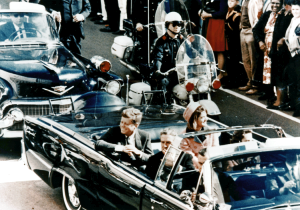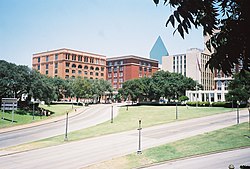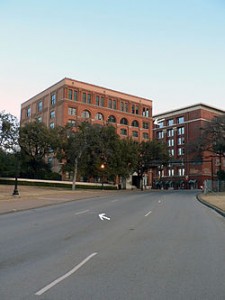50th Anniversary Assassination of John F. Kennedy

Video Unreleased JFK Assassination
Netizens have shown disturbed by a recording of the famous assassination of John F. Kennedy. They say it’s a complete video of what happened from the Dallas airport to the hospital on November 22, 1963. The most impressive scene starts at minute 5:59. The first bullet goes almost unnoticed, we can only see how the U.S. president begins to fall into the hands of his wife, Jacqueline. But the second bullet strikes squarely in the skull. Kennedy was taken to hospital, where half an hour after the shooting, doctors certified the death. The video is a little over 15 minutes. It is unknown who was the author of the assembly of the new video, which, in fact, represents a mixture of different videos in both color and black and white.
 President Kennedy with his wife, Jacqueline, and Governor of Texas John Connally in the presidential limousine, minutes before the President’s assassination
President Kennedy with his wife, Jacqueline, and Governor of Texas John Connally in the presidential limousine, minutes before the President’s assassination
John Fitzgerald Kennedy, the 35th President of the United States, was assassinated at 12:30 p.m. Central Standard Time (18:30 UTC) on Friday, November 22, 1963, in Dealey Plaza, Dallas, Texas. Kennedy was fatally shot by a sniper while traveling with his wife Jacqueline, Texas Governor John Connally, and Connally’s wife Nellie, in a presidential motorcade. A ten-month investigation from November 1963 to September 1964 by the Warren Commission concluded that Kennedy was assassinated by Lee Harvey Oswald, acting alone, and that Jack Ruby also acted alone when he killed Oswald before he could stand trial.
Although the Commission’s conclusions were initially supported by a majority of the American public, polls conducted between 1966 and 2003 found that as many as 80 percent of Americans have suspected that there was a plot or cover-up. A 1998 CBS News poll showed that 76% of Americans believed Kennedy had been killed as the result of a conspiracy. A 2013 AP poll showed, that although the percentage had fallen, more than 59% of those polled still believed that more than one person was involved in the President’s murder. A Gallup Poll in mid-November 2013 showed 61% believed in a conspiracy and 30% thought Oswald did it alone.
In contrast to the conclusions of the Warren Commission, the United States House Select Committee on Assassinations (HSCA) concluded in 1978 that Kennedy was probably assassinated as a result of a conspiracy. The HSCA found the original FBI investigation and the Warren Commission Report to be seriously flawed. While agreeing with the Commission that Oswald fired all the shots which caused the wounds to Kennedy and Connally, the HSCA stated that there were at least four shots fired (only three of which could be linked to Oswald) and that there was “…a high probability that two gunmen fired at [the] President.”
The HSCA did not identify any other person or group involved in the assassination besides Oswald, but they did specifically say the CIA, the Soviet Union, organized crime, and several other groups were not involved, although they could not rule out the involvement of individual members of those groups. Kennedy’s assassination is still the subject of widespread debate and has spawned numerous conspiracy theories and alternative scenarios.
Route to Dealey Plaza
Route to Dealey Plaza
The motorcade route through Dallas was planned to give Kennedy maximum exposure to Dallas crowds before his arrival, with Vice-President Lyndon Johnson and Connally, for a luncheon with civic and business leaders. Kennedy would arrive at Dallas’ Love Field via a short flight from Carswell Air Force Base in Fort Worth.
The Dallas Trade Mart had been preliminarily selected for the luncheon and the final decision of the Trade Mart as the end of the motorcade journey was selected by Kennedy’s friend and appointments secretary Kenneth O’Donnell. Leaving from Dallas’ Love Field, 45 minutes had been allotted for the motorcade to reach the Dallas Trade Mart at a planned arrival time of 12:15 p.m. The actual route was chosen to be a meandering 10-mile (16-km) route from Love Field to the Trade Mart which could be driven slowly in the allotted time.
Special Agent Winston G. Lawson, a member of the White House detail who acted as the advance Secret Service Agent, and Secret Service Agent Forrest V. Sorrels, Special Agent In Charge of the Dallas office, were most active in planning the actual route. On November 14, Lawson and Sorrels attended a meeting at Love Field and drove over the route which Sorrels believed best suited for the motorcade. From Love Field, the route passed through a portion of suburban Dallas, through the downtown area along Main Street, and finally to the Trade Mart via a short segment of the Stemmons Freeway.
For the President’s return to Love Field, from which he planned to depart for a fund-raising dinner in Austin later in the day, the agents selected a more direct route, which was approximately 4 miles, or 6.4 kilometers (some of this route would be used after the assassination). The planned route to the Trade Mart was widely reported in Dallas newspapers several days before the event, for the benefit of people who wished to view the motorcade.
To pass through downtown Dallas, a route west along Dallas’ Main Street, rather than Elm Street (one block to the north) was chosen, because this was the traditional parade route, and provided the maximal building and crowd views. The Main Street route precluded a direct turn onto the Fort Worth Turnpike exit (which served also as the Stemmons Freeway exit), which was the route to the Trade Mart, because this exit was accessible only from Elm Street. The planned motorcade route thus included a short one-block turn at the end of the downtown segment of Main Street, onto Houston Street for one block northward, before turning again west onto Elm, in order to proceed through Dealey Plaza before exiting Elm onto the Stemmons Freeway. The Texas School Book Depository was situated at this corner of Houston and Elm.
Three vehicles were used for secret service and police protection in the Dallas motorcade. The first car, an unmarked white Ford (hardtop), consisted of Dallas police chief Jesse Curry, secret service agent Win Lawson, Sheriff Bill Decker and Dallas field agent Forrest Sorrels. In the second car, a 1961 Lincoln Continental convertible driven by agent Bill Greer, were agent Roy Kellerman, Connally, Nellie Connally, Kennedy and Jackie Kennedy.
The third car, a 1955 Cadillac convertible driven by agent Sam Kinney, carried agent Emory Roberts, presidential aides Ken O’Donnell and Dave Powers, driver agent George Hickey and agent Glen Bennett. Secret Service agents Clint Hill, Jack Ready, Tim McIntyre and Paul Landis rode on the running boards. There was an AR-15 rifle in the third vehicle.
On November 22, after a breakfast speech in Fort Worth, where Kennedy had stayed overnight after arriving from San Antonio, Houston and Washington, D.C. the previous day, Kennedy boarded Air Force One, which departed at 11:10 and arrived at Love Field 15 minutes later. At about 11:40, the presidential motorcade left Love Field for the trip through Dallas, which was running about ten minutes longer than the planned 45 minutes due to enthusiastic crowds (estimated at 150,000–200,000 persons) and two unplanned stops directed by Kennedy. By the time the motorcade reached Dealey Plaza they were only 5 minutes away from their planned destination.

Shooting in Dealey Plaza
At 12:29 p.m. CST, as the open limousine entered Dealey Plaza, Nellie Connally, then the First Lady of Texas, turned to Kennedy, who was sitting behind her, and commented, “Mr. President, you can’t say Dallas doesn’t love you,” which Kennedy acknowledged.
As the presidential limousine turned left from Houston Street onto Elm Street it passed the Texas School Book Depository. Seconds after the turn, shots were heard. Most witnesses recalled hearing three shots.
Though a few witnesses recognized the sound they heard as that of a weapon, there was little reaction to it. Many later said they thought they heard a firecracker, or vehicle backfire, just after Kennedy started waving.
Within one second of one another (Zapruder film frames 155–169) Kennedy, Connally, and Mrs. Kennedy, all turned abruptly from facing left to facing right. Connally testified he immediately recognized the sound of a high-powered rifle, then he turned his head and torso rightward, attempting to see Kennedy behind him. Connally later testified he could not see Kennedy, so he then started to turn forward again (turning from his right to his left). Connally testified that when his head was facing about 20 degrees left of center, he was hit in his upper right back by a bullet he did not hear fired. The doctor who operated on Connally measured his head at the time he was hit as turned 27 degrees left of center. After Connally was hit he shouted, “Oh, no, no, no. My God. They’re going to kill us all!”
Mrs. Connally testified that just after hearing a first loud, frightening noise that came from somewhere behind her and to her right, she turned toward Kennedy and saw him with his arms and elbows raised high, with his hands in front of his face and throat. She then heard another gunshot and then Connally yelling. Mrs. Connally then turned away from Kennedy toward her husband, at which point another gunshot sounded and she and the limousine’s rear interior were covered with fragments of skull, blood, and brain.
According to the Warren Commission, and the House Select Committee on Assassinations, as Kennedy waved to the crowds on his right with his right arm upraised on the side of the limo, a shot entered his upper back, penetrated his neck, slightly damaged a spinal vertebra and the top of his right lung, and exited his throat nearly centerline just beneath his larynx, nicking the left side of his suit tie knot. He raised his elbows and clenched his fists in front of his face and neck, then leaned forward and left. Mrs. Kennedy, facing him, then put her arms around him in concern.
Connally also reacted after the same bullet penetrated his back just below his right armpit, creating an oval entry wound, impacted and destroyed four inches of his right fifth rib, exited his chest just below his right nipple, creating a two-and-a-half inch oval sucking-air chest wound, entered his arm just above his right wrist, cleanly shattered his right radius bone into eight pieces, exited just below the wrist at the inner side of his right palm, and finally lodged in his left inner thigh. The Warren Commission theorized that the “single bullet” (see single bullet theory) struck sometime between Zapruder frames 210 to 225, while the House Select Committee theorized that it struck exactly at Zapruder frame 190.
According to the Warren Commission, a second shot struck Kennedy at Zapruder film frame 313. The Commission made no conclusion as to whether this was the second or third bullet fired. The presidential limousine was then passing in front of the John Neely Bryan north pergola concrete structure. Meanwhile, the House Select Committee concluded that a fourth shot was then fired at almost the same time, from a separate sniper, but that it missed. Each body concluded that the second shot to hit Kennedy entered the rear of his head (the House Select Committee placed the entry wound four inches higher than the Warren Commission placed it) and, passing in fragments through his head, created a large, “roughly ovular” [sic] hole on the rear, right side. The president’s blood and fragments of his scalp, brain, and skull landed on the interior of the car, the inner and outer surfaces of the front glass windshield and raised sun visors, the front engine hood, the rear trunk lid, the followup Secret Service car and its driver’s left arm, and motorcycle officers riding on both sides of Kennedy, somewhat behind him.
United States Secret Service Special Agent Clint Hill was riding on the left front running board of the follow-up car, which was immediately behind the Presidential limousine. Hill testified that he heard one shot, then, as documented in other films and concurrent with Zapruder frame 308, he jumped off into the street, ran forward, and leapt onto the rear of the presidential limousine. (Hill later testified to hearing two more shots after jumping into the street).
After the shot to President Kennedy’s head, Mrs. Kennedy began to climb onto the back of the limousine, though she later had no recollection of doing so. Hill believed she was reaching for something, perhaps a piece of the President’s skull. He jumped onto the back of the limousine while at the same time Mrs. Kennedy returned to her seat, and he clung to the car as it exited Dealey Plaza and accelerated, speeding to Parkland Memorial Hospital.
After Mrs. Kennedy crawled back into her limousine seat, both Governor Connally and Mrs. Connally heard her say more than once, “They have killed my husband,” and “I have his brains in my hand.” In a long-redacted interview for Life magazine days later, Mrs. Kennedy recalled, “All the ride to the hospital I kept bending over him saying, ‘Jack, Jack, can you hear me? I love you, Jack.’ I kept holding the top of his head down trying to keep the…” The President’s widow could not finish her sentence.
Others wounded
Connally, who had been in a seat forward of Kennedy and three inches to his left, was also critically injured but survived. Doctors later stated that after Connally was shot, his wife pulled him onto her lap, which helped close his chest wound (through which air was being drawn into his chest, collapsing his right lung).
Witness James Tague also received a minor wound to his right cheek while standing on Dealey Plaza 531 feet (162 m) from the Depository’s sixth floor, easternmost window, 270 feet (82 m) in front of and slightly to the right of Kennedy’s head-facing direction, and about 16 feet (4.9 m) below the president’s head. Tague’s injury occurred when a bullet or bullet fragment struck the nearby Main Street south curb. Tague at first told the Warren Commission that he believed that either the second or third shot he heard was the one that struck him; pressed further, he said he believed he was struck with the second shot and had heard the third shot afterwards.
http://en.wikipedia.org/wiki/Assassination_of_John_F._Kennedy







